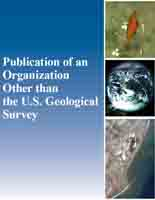The nesting ecology and reproductive rate of the polygynous red-winged blackbird, Agelaius phoeniceus, were studied in the tidal marshes of Maryland during the period of 1958 through 1961. Sixteen nesting colonies were located in six major marsh communities of the Eastern Shore and were visited approximately twice a week from late April to mid-August. The average clutch size for 537 clutches was 3.3 eggs, with a range of 2 to 5 eggs. The ratio of territorial males to nesting females was 1:1.9. There was direct evidence of double broods by four females. The average number of young produced was 4.2 per breeding female or 8.1 per breeding male. Nesting success for the total of 675 active nests was 57%, with a range from 38% to 69% in the colonies. Robust plants that held constant form throughout the nesting season supported 95% of the nests, and the success of these nests was 58%; in contrast, non-robust plants supported only 5% of the nests, and success of this group of nests was only 26%. Nesting success varied with height from ground: 45% for nests less than 2 feet from the ground, 55% for those 2 to 4 feet, and 62% for those more than 4 feet. Histories of 749 nests were summarized by stages: 749 newly built, 675 with eggs, 424 with nestlings, and 388 with fledging young.


